Category: Cabinetmaking
3 Cabinet Trends to Keep An Eye on in Cabinet Making School & Beyond
November 29, 2022
Whether you’re ready to pursue a carpentry apprenticeship or you’re just thinking about taking the first step into cabinet making training, knowing the styles you’ll have to choose from will make your projects that much easier. In the case of kitchen renovations, cabinets can significantly impact the appearance of the whole project. Before creating custom cabinets for your own home or for future clients, you’ll want to determine the desired visual effect. Are you looking to follow the latest trends, or are you going for a timeless look? What kind of budget are you working with? Surely, you’ll come across one of the three styles covered below when it’s time to get your first project started. Keep reading for a look at some popular cabinet trends!
1. Flat Cabinets Are Both Inexpensive and Sleek
Flat cabinets check several boxes for many people. Not only are they sleek, stylish, and perfect for those who prefer a modern finish. They are often simple and inexpensive to make since there are fewer intricate details to add–which means there’s no need to purchase trim or moulding. This minimalistic look is particularly popular for those who prefer a more functional style.
Because a clean, smooth look is usually the preference with flat cabinets, naturally stained wood with little grain is a popular choice. They are also often painted using neutral colours. One pointer to keep in mind after completing cabinet making courses is to play around with the rules to add a unique touch. In your carpentry career, the goal is always to satisfy customer wishes. But feel free to use your creativity and experience when offering your professional opinion.
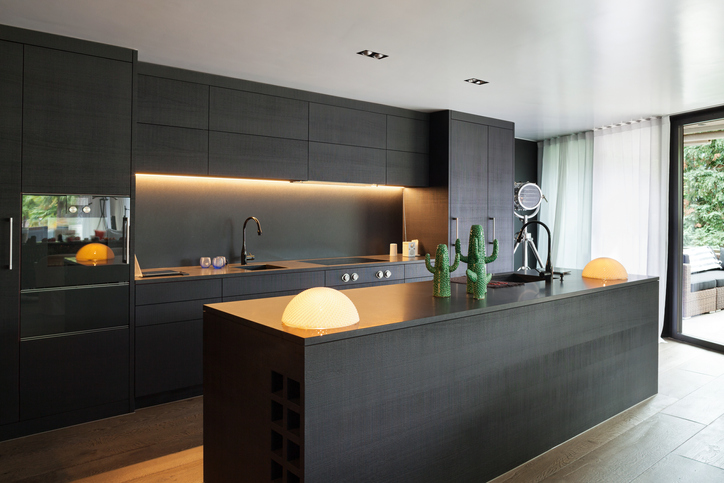
2. Traditional Styles Are Making a Come-Back
Many people are less concerned with trendy styles that can quickly become dated, and are opting for traditional styles that remain timeless. Traditional cabinets are inspired by an antique European aesthetic, which can create a luxurious and ornate feel. Naturally, this style tends to suit the skillset of more experienced carpenters. Unlike modern flat cabinets, you’ll see plenty of details like arches, raised panels on doors, and moulding. Heavier woods are popular choices for this trend. Recently, a rustic finish on traditional cabinets has been used to adapt the classic style, but you’ll see many variations during and after cabinet making school.
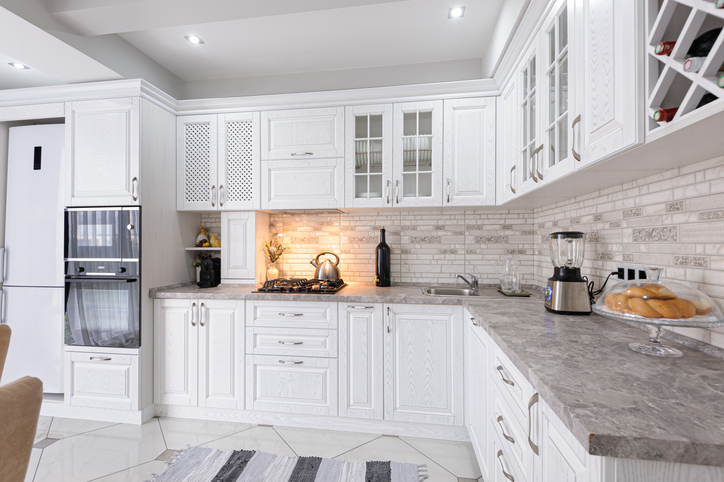
3. Look Out for Shaker Cabinets After Cabinet Making School
Shaker cabinets represent a balanced mix of the two styles discussed above. The style originates from an American movement in the 18th century, most known as the Shakers. Their style was famously utilitarian, emphasizing function and durability over frill. Shaker cabinets are described as austere and clean, though they can feature traditional details for some visual interest. Our Cabinet Making Diploma Program will teach you the ins and outs of woodworking, cabinet installation, and the carpentry trade, preparing you to bring both style and functionality to professional projects.
Ready to enroll in our cabinet making diploma program?
Contact NATS for more information!
Are you looking for a way to channel your creativity into a career? Taking cabinetmaking courses could be a great way to do just that. Cabinetmakers are artists who use their woodworking skills to create beautiful pieces of furniture for many different rooms of the house. From the beginning stages of design to the development of blueprints, and all throughout the manufacturing process, cabinetmakers produce pieces tailored to the specifications of the client or company they’re working for.
If you’re wondering what a career as a cabinetmaker could entail, you can find out everything you need to know about this profession, including what kinds of duties you’ll be performing and your opportunities for employment, in the infographic below. Read on to find out what a career will be like after cabinetmaking training.
[Infographic] What You Should Know About Becoming a Cabinetmaker
Having an Eye for Detail Will Be Important
Impeccable attention to detail is important for cabinetmakers to:
- Build complex designs
- Work precisely to ensure perfection
- Use the right proportions to construct projects
- Read blueprints correctly
You Can Choose From Many Different Work Environments
As a cabinetmaker, you can work at:
- Custom furniture manufacturers
- Cabinetmaking contractors
- Construction companies
- Contract your services privately
You’ll Work with a Variety of Tools
Cabinetmakers use the following tools:
- Drum Sander
- Saw Table
- Dust Extraction System
- Cordless Drills
- Laminate Trimmers
- Wood glue, screws, nails and more
Official Training Will Be an Asset
A cabinetmaking program can teach you:
- How to select the right wood
- How to operate woodworking machinery
- How to read blueprints and drawings
- Safety precautions and procedures
Throughout the Day You’ll Complete a Variety of Tasks
Cabinetmakers perform a range of duties, including:
- Operate machines and use tools to prepare wood
- Prepare work estimates
- Interpret and create blueprints and drawings
- Conduct repairs or upgrades
- And more!
If you think this career could be right for you, consider enrolling in a cabinetmaking program today!
Sources:
Cabinetmaker | Careers in Construction
Cabinetmaking Career Information: Becoming a Cabinetmaker (study.com)
Architectural Millwork: An Intro for Students in Cabinetmaking Training
November 16, 2022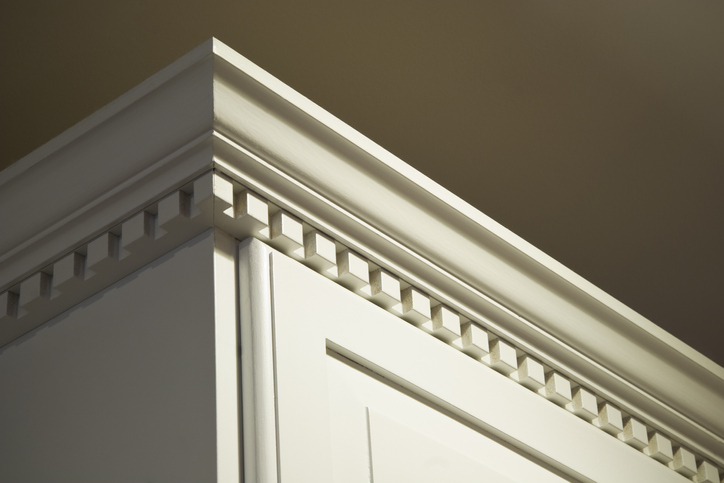
Do you love working with your hands and seeing a future for yourself in the construction industry? If so, it’s a great idea to scope out all of the career paths available to you before getting started. If it’s not on your radar yet, you should definitely consider architectural millwork. It’s a great option for those who have a creative streak and an appreciation for aesthetics. Learn what architectural millwork entails, what sort of environments you can expect to work in, and what duties and skills are required. This rewarding career allows you to take pride in your handmade creations, which will be components of buildings for years to come. Keep reading for a comprehensive guide to architectural millwork.
What Is Architectural Millwork?
Architectural millwork (often called architectural woodwork) is simply the production of different components that will be used internally and externally on architectural structures. Your projects may be purely functional, decorative, or a bit of both, depending on the needs of your company’s clients. Common project types you may encounter include wall paneling, trim, doors, casework, staircases, and countertops.
Unlike traditional millwork, wood is not the only material you can expect to work with on a regular basis, as plastic laminates could show up from time to time. That being said, there are different types of architectural millwork. Keep reading to see which one you’d prefer to pursue after cabinetmaking training.
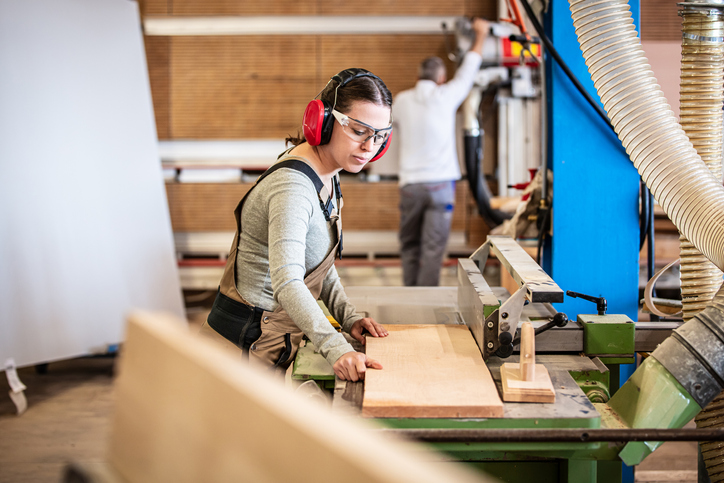
Work Environment Options to Explore After Cabinetmaking Training
There are two primary types of architectural millwork that could have you working in vastly different environments. Commodity millwork takes place in a manufacturing setting where the goal is to mass-produce pieces. Projects in this setting are usually made from cheaper materials since clients, often development companies, are looking to build as many structures as they can at the lowest possible price.
If you value workmanship over efficiency, seeking a position in a custom millwork company after completing your cabinetmaking diploma program is a great idea. In this environment, the goal will be to produce high-quality bespoke pieces for clients, and you’ll have the opportunity to perfect the artistry of your work.
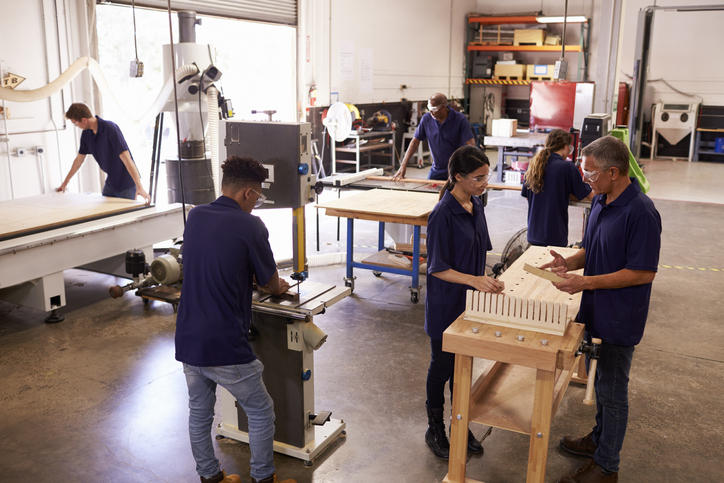
Required Duties, Responsibilities and Skills for Architectural Millwork
Effective architectural millworkers must have manual dexterity, an understanding of materials, and an eye for detail to produce excellent quality woodwork pieces. In addition, they must have the ability to work in a team with excellent communication and collaboration skills. The Cabinetmaking Training Program will prepare you to take on a position in a variety of woodworking careers. The program emphasizes hands-on carpentry, making it the perfect introduction for students interested in a future career in architectural millwork. As the development industry continues to thrive and skilled handiwork is needed, those who choose architectural millwork have a great chance of enjoying a hands-on, lucrative career.
Ready to enroll in cabinetmaking courses?
Contact NATS for more information!
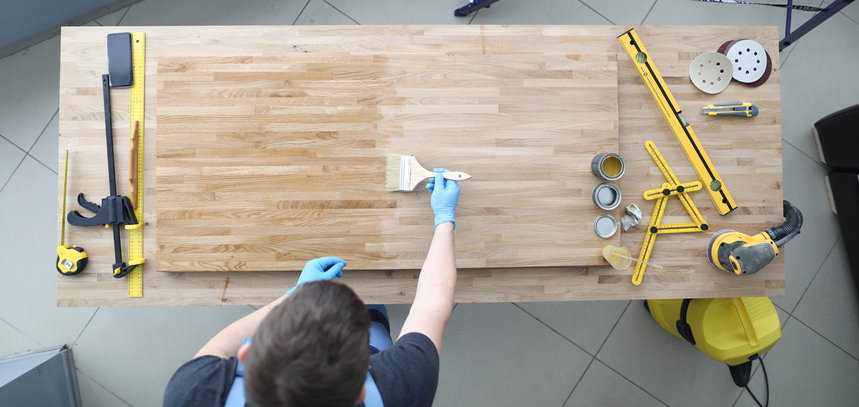
Various steps are involved in modern cabinetmaking, and correctly applying the finish is an important one. With the right finish, you can create beautiful and durable cabinets. That’s because applying the right finish plays a big role in helping you extend the lifespan of your cabinets.
Students interested in becoming professional cabinetmakers can complete their training and hone their skills, gaining the experience they need to successfully launch their careers. Here, they learn how to identify and select wood, read drawings, operate woodworking machines and even apply different types of protective and decorative finishes. Through the techniques you develop from your training, you can complete key cabinetmaking tasks (like applying the finishing) with confidence and skill.
Here’s how you can get started on creating masterfully finished cabinets!
Planning and Preparing for Your Cabinetmaking Project
Planning ahead is the most important step when starting a cabinetmaking project, especially when it involves applying finishes. First, you’ll want to make sure that your cabinets can handle the finish you choose. For a smooth finish, it’s best to look for close-grained wood species that are known to take paint well, like maple or poplar wood. If you plan on using open-grained wood, then you’ll need to use a wood grain filler.
Ultimately, you want to ensure that the cabinets you’re working with are in good shape. In addition to planning your timeline, you need to consider your materials. After taking cabinet making courses, you may be using a range of equipment, including a mask, brushes, gloves, tape, a sprayer and a drying rack. It’s also best to work in a clean space with a moderate temperature to help with drying your work.
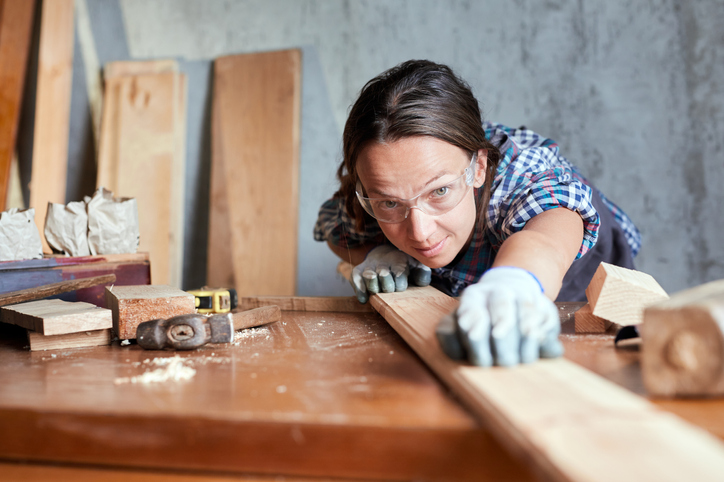
Finishing Cabinets Efficiently After Cabinet Making Training
Finding the right finish depends on the style you want to go for. You can pick paint finishes or opt for stain ones. The former can help you create a modern aesthetic while the latter can produce a more traditional look. Generally, a paint finish allows you to apply a wide range of colours to your cabinets, while a stain finish is best used for emphasizing the wood. It should be noted that paint finishes aren’t as durable and stain finishes can be more time-consuming to apply.
When applying, you’ll want to thoroughly clean the items you’re working on and remove any grease or dirt. Here, wood filler can be used to fill in dents or cracks in the wood for an even finish.
Sanding is also a key part of this process. Before applying your primer and in between each coat of paint and primer, you’ll want to sand the surface. If you notice any sharp edges or corners, then sanding should be your go-to solution to smooth down surfaces and help the wood absorb the paint well. For a professional result, you can rely on an airless spray painting device.
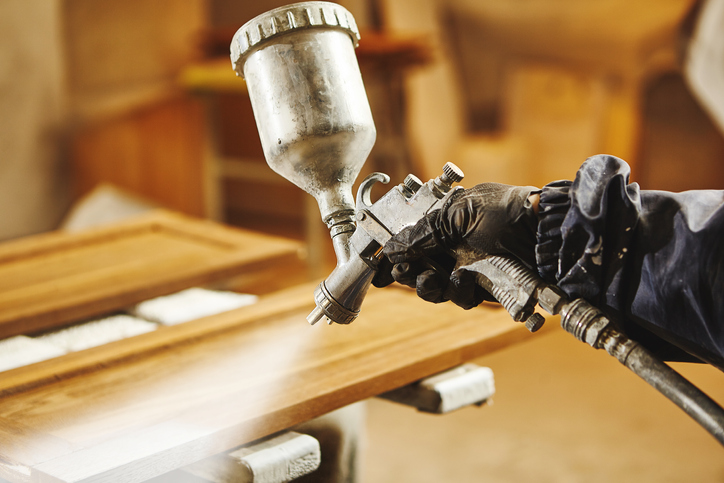
Things to Keep in Mind When Finishing Cabinets
Remember, wood is easily influenced by moisture as well as extreme cold and heat. Although paint can slow down the wood’s changes, it loses its elasticity once it dries. This can create cracks or chipping. To prevent this from happening, you’ll need to put extra care into your preparation stage, properly sand your surfaces and let your work dry completely before moving on to the next steps.
If you’re using a stain finish or applying a new technique, then you may want to test and refine your work on a scrap piece of wood. This way, you can save your materials and boost your productivity. By completing your cabinet making training, you can gain the knowledge and skills you need to become a professional in the field. You’ll learn how to efficiently shape and cut wood, assemble components and work on the preparation of articles for finishing. With these insights, you can more confidently apply cabinet finishes and complete your cabinetmaking projects.
Thinking of going to cabinet making school?
Contact NATS for more information!
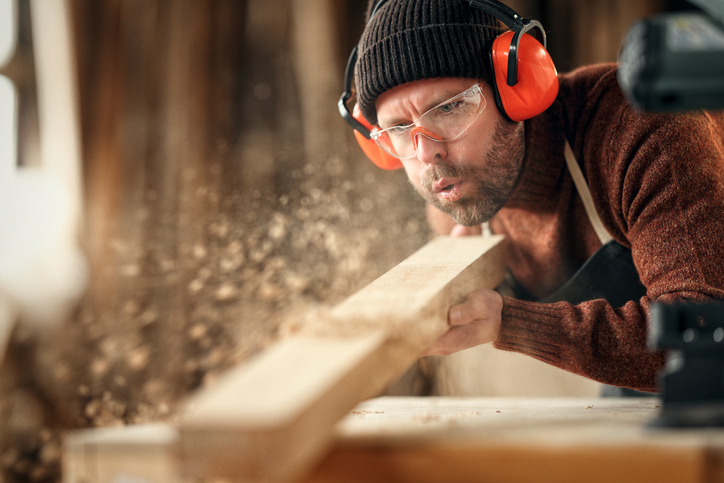
Are you a detail-oriented person looking to turn their affinity for “handy” tasks into a profession? As a cabinetmaker, you’ll be crafting furniture, art and more from wood, using your knowledge of woodworking and modern tools to produce high-quality creations. Your passion for innovation will help you to turn a vision into a step-by-step project, applying your skills to carry your work from conception to completion.
With training at North American Trade Schools, you’ll gain the practical experience necessary to pursue a career in this field, equipped with industry-relevant skills and techniques. You may decide to work in a team for a construction company, furniture manufacturer or contractor, or take on projects at your discretion as a self-employed cabinetmaker.
Whatever path you choose, your day-to-day work will be both engaging and hands-on. Below, make a more informed decision about your career by discovering what a day on the job could look like as a professional cabinetmaker.
Daily Responsibilities of a Professional With Cabinet Making Training
After cabinet making school, you’ll have a few key responsibilities to attend to on any given day. As a cabinetmaker, you’ll be working on various projects at a time. In order to complete each project, your duties might include:
- Studying blueprints and plans for upcoming projects
- Measuring dimensions of different wooden components for assembly
- Using woodworking machines to shape components
- Assembling, trimming, fastening and reinforcing various parts
- Sanding, polishing or staining finished designs
- Repairing various types of wooden furniture
While these are just some of the duties you may be responsible for, you can expect to perform any of these on a given day on the job.
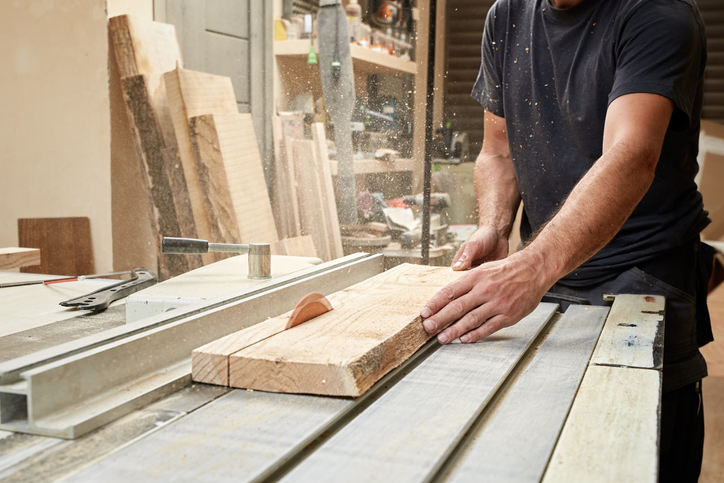
Weekly and Monthly Duties
While there are a number of responsibilities you’re likely to complete on a daily basis, after cabinet making training, there will also be a few tasks which you’ll complete on more specialized occasions.
For one, you’ll hold consultations with clients and potential customers, listening to their requests, specifications and goals, and drawing up potential projects based on their parameters. After these sessions, you’ll likely draw up work estimates for clients to give them an idea of what the project entails.
You may also need to conduct routine maintenance on the machinery and equipment you use, cleaning and inspecting your tools for signs of damage or wear and tear. If you use machinery that’s programmed by a computer, you’ll also need to reprogram this machinery regularly.
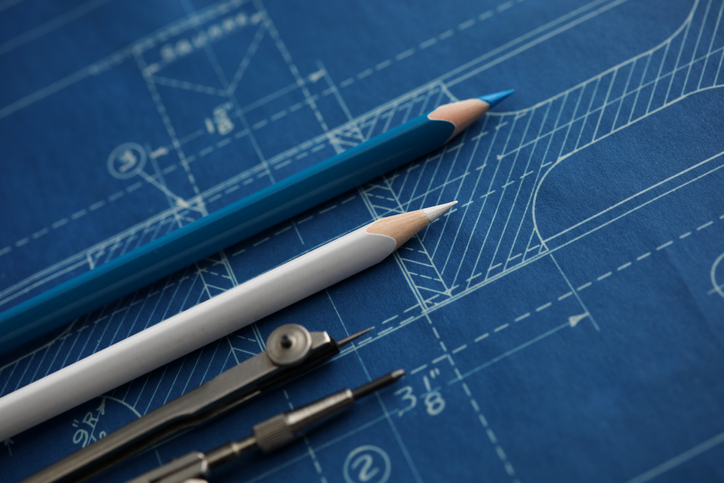
Work Conditions
As a cabinetmaker, your working conditions and environment will depend on the nature of your employment. If you work for a construction company or furniture manufacturing company, it’s likely that you’ll be working in teams, using a variety of woodworking machinery. If you’re self-employed, you may work out of your own home or garage, travelling to clients’ houses to get a better idea of their specifications.
As you complete your training and apprenticeship, gaining experience in the industry, you’ll have a better idea of the kind of organization you’d like to work at, or even the type of cabinetry you’d like to specialize in.
Ready to enrol in cabinet making courses?
Start training today with a program at the North American Trade Schools!
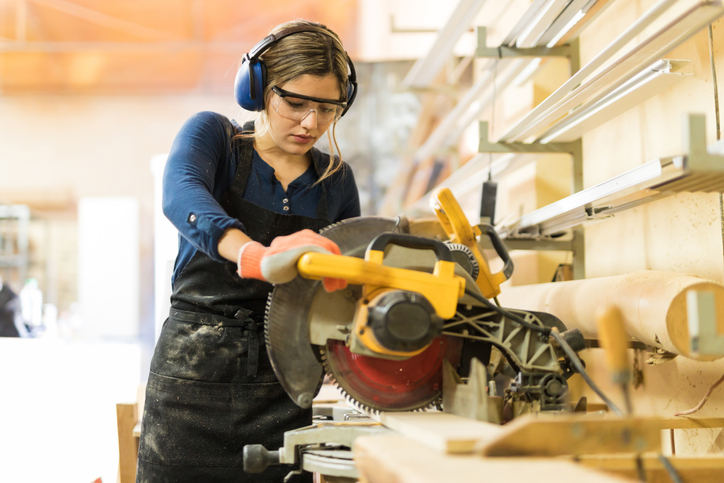
Cabinet making is an art. For a cabinet maker who enjoys working with wood and creating top-notch cabinets, you’ll need the right tools for the job. Pneumatic tools make the top of the list of useful equipment to have in your career. Pneumatic tools are considered cheaper than electric tools. They are more precise and lighter to handle, which is an added bonus when your hands are getting tired from working away at the wood.
At NATS, you’ll get pre-apprenticeship training in cabinet making that’ll provide you with the hands-on skills needed to launch your career. You’ll learn about wood design and layout, identifying and selecting wood, reading blueprints, operating woodworking machines and pneumatic tools and much more. Let’s take a closer look at the pneumatic tools you’ll get to use in your cabinet making career!
1. An Air Compressor Is a Must After Cabinet Making Training
If you want to get the job done well using pneumatic tools, then you’ll definitely need to use an air compressor around the woodshop. It may seem noisy and a bit on the large end at first, but simply put, it’s safer and much cheaper to use when you need controlled power out of your tools. After you complete your cabinet making training, you’ll make use of air compressors to supply power to staple guns or nail guns and manage pneumatic jigs and clamps. You’ll probably encounter common air compressors that make use of a pump known as a positive displacement model, which forces the supply of air into the tank. Some of the smaller compact air compressors only use oil-free pumps, offering you the luxury of minimal maintenance.
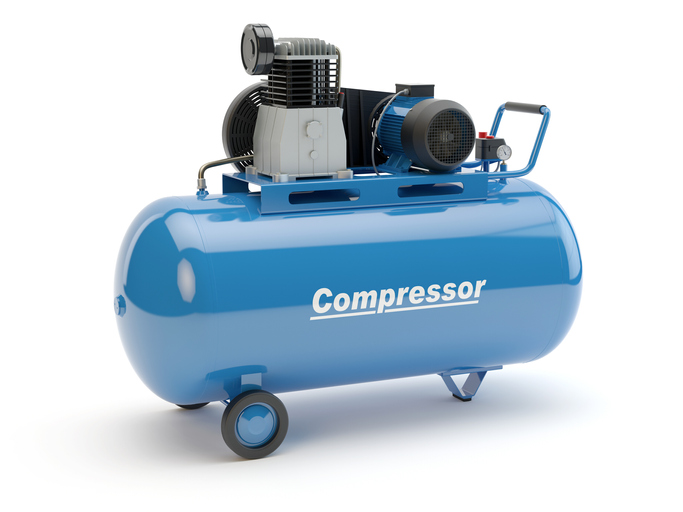
2. You Can’t Go Wrong With a Speedy Pneumatic Staple Gun
A pneumatic staple gun is a powerful and essential tool to have by your side after you complete your training at a cabinet making school. Pneumatic staple guns are used to add finishing touches to cabinets that aren’t usually visible to the naked eye. You’ll use this type of staple gun to fasten the backs of cabinets, assemble cabinet door jambs and fasten tongue and groove cabinet boards. The pneumatic staple gun offers speed and accuracy, powered by the air compressor with the use of a trigger and a cartridge. With this kind of air supply, an electric staple gun can’t match a pneumatic staple gun for power when it comes to working with wood in cabinet making.
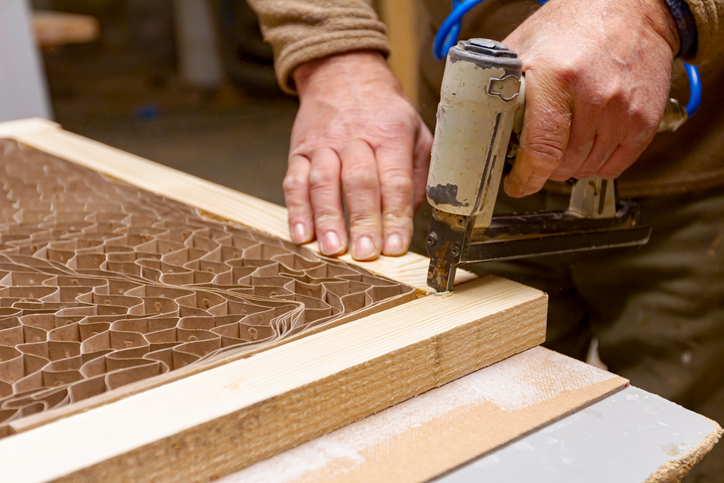
3. Drive Nails With the Pneumatic Finish Nailer
When it comes to driving nails as a cabinet maker, nothing seems easier and faster to use than the pneumatic finish nailer. It provides an instant trigger that shoots the nail straight into the piece of wood. The finish nailer carries 15 to 16-gauge finish nails that offer size and stability for cabinet-making projects. It’s also considered a versatile tool since it can be used with various materials and surfaces. The finish nailer also has a convenient feature that allows you to determine the depth at which you want to insert the nails, without the need for any additional tools.
Are you interested in cabinet making courses?
Contact NATS for more information about our training programs!
Launching a Career in Store Fixture Construction After Cabinet Making Training
March 08, 2022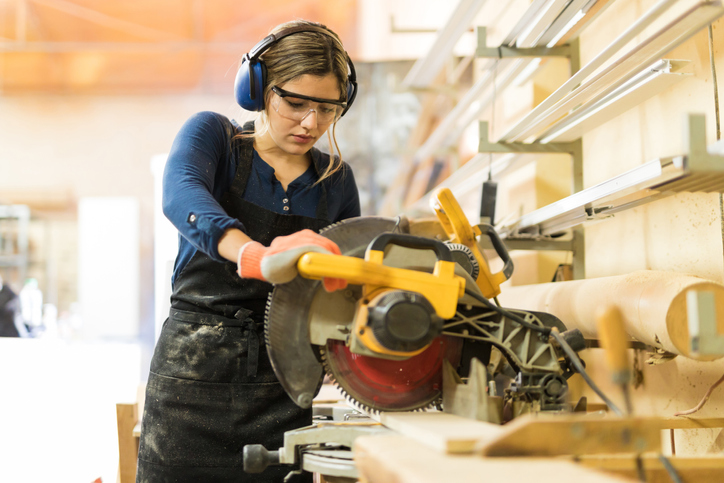
If you like working with your hands and enjoy woodworking, then a career in store fixture construction could be ideal for you. You’ll enjoy designing and installing fixtures for different clientele after you complete your training in cabinet making.
At NATS, we provide you with hands-on training in cabinet making, where you’ll learn about: design and layout, reading blueprints, using power machines and tools, and much more. These skills will make you a marketable candidate as you set out to launch your career. What kinds of careers could you work towards? Fortunately, there are quite a few options for you to look forward to, including a career working on store fixtures. The store fixture field is full of different opportunities to tap into, benefits to enjoy, and trends to stay on top of.
Read on to discover what awaits you in store fixture construction!
About Store Fixture Construction
When you choose to specialize in a field, it’s important to know what it’s about. Store fixture construction is the bread and butter of retail stores. The way that store fixtures are designed, made, and displayed bring out the functionality that stores need to show off their merchandise. Cabinet making training will allow you to design and install hardware according to customer specs and according to your recommendations. As a result, stores will rely on your expertise and skills to design functional customized fixtures that can display and hold specific products and items.
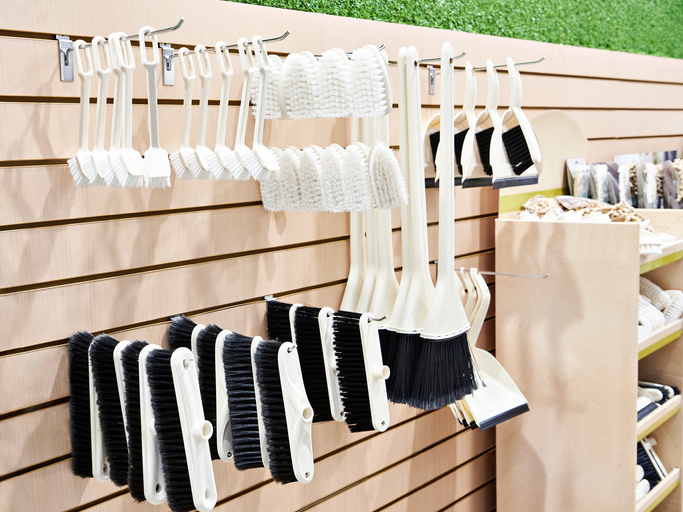
Experience Variety While Working in Store Fixture Construction
When you choose to specialize in the store fixture construction field, you’ll probably get the chance to work on several projects with different retailers. This will give you the chance to showcase your skills after your cabinet making courses. This career path will also provide you with variety, as you design and install different customized store fixtures for the different retailers that require your services. You’ll also have the opportunity to travel from time to time to different locations and stores across your city or even further afield. With a driver’s license, you can treat your work as a road trip as you drive from one retail store to the next, as you discuss with store owners and managers what fixtures you’ll create to fit their needs.
Check Out Store Fixture Construction Trends After Cabinet Making Training
Retailers are always trying to innovate and come up with new ways to make their store stand out. They want to make sure that they attract customers with fresh, eye-catching designs, and that means that they’re very interested in staying up to date on the latest trends affecting store fixtures. As a result, your career in store fixture construction will let you experience new trends as they make their way into the industry. Some retailers, for example, might be trying to move towards a sophisticated minimalist display of their merchandise using plenty of curves and angles. Minimalism is a big trend right now—especially in retail! However, as time goes on, you’re bound to encounter many other trends as they sweep through store shelves.
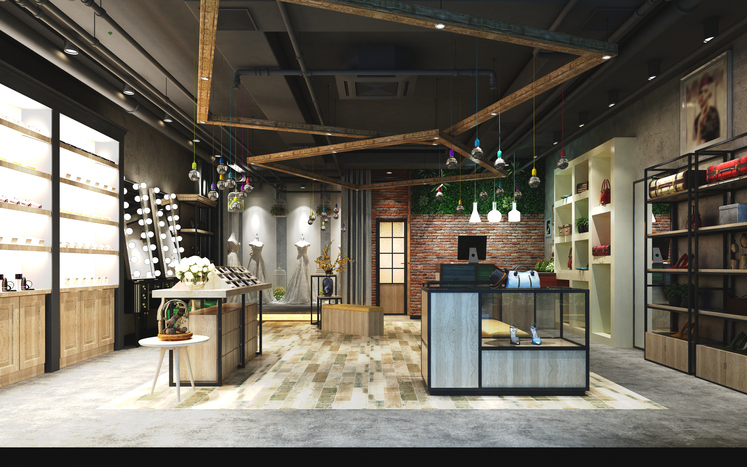
Minimalism is a big trend you might encounter if you work on store fixtures
Are you interested in cabinet making school?
Contact NATS for more information about our training programs!
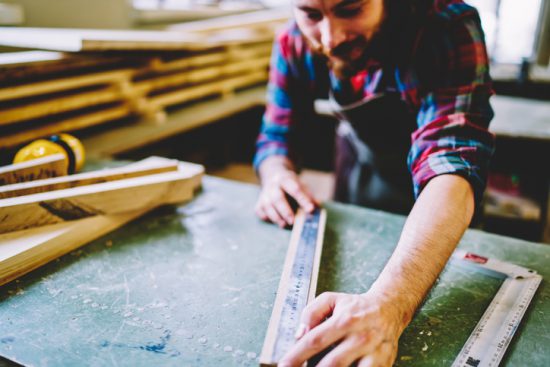
If you’ve always loved the satisfaction of putting something together with your own two hands–with a keen eye for detail–you’ll probably be a great fit for a cabinetmaking career. Cabinetmakers select wood, create and interpret drawings and operate various woodworking machinery in order to construct cabinetry of all sizes and functions. In the process of finalizing cabinet construction, cabinetmakers will typically conduct the process of lamination.
Lamination, the process of making a material more durable by using glue and heat to bind it with another surface, is important in preserving cabinets from deterioration or general wear and tear. As a cabinetmaker, you’ll implement the process of wood lamination to ensure that the cabinets you build can be used for years to come. Below, discover everything you need to know about wood lamination.
Beginning the Lamination Process After Cabinet Making School
Once you’ve completed your cabinetmaking training, you’ll be utilizing the lamination process to finish off each piece of cabinetry. However, before beginning, it’s important to correctly prepare the cabinets for lamination, as failure to do so could result in a scratched or incomplete lamination job.
Before laminating, you’ll want to sand each cabinet completely–ensuring that there are no scratches or dents on the wood. If there are scratches, consider filling them with putty in order to create a smooth, workable surface. Next, you’ll want to gather your supplies. Your main supplies will consist of veneer (thin sheets of melamine or wood) and glue. Make sure you also have on hand a roller, contact cement, an adjustable router and some eye protection. Once you find a well-ventilated area to work in, you’re ready to get started.

Applying Laminate to Cabinets
Once you’re ready to laminate, you can cut the veneer to fit the cabinet you’re working with. In order to be safe, cut it down to about a centimetre larger than your surface, as this gives you room to clean up everything when the process is complete. Next, you can remove any dust or debris from your laminate, and open your glue. Working in long strokes with your roller tool, apply the glue to both the bottom of the veneer and the top of the cabinet surface. Once each surface is thoroughly coated, you can place the veneer onto the cabinet. However, it’s important to make sure that the centimetre you’ve originally left is hanging off the edges.
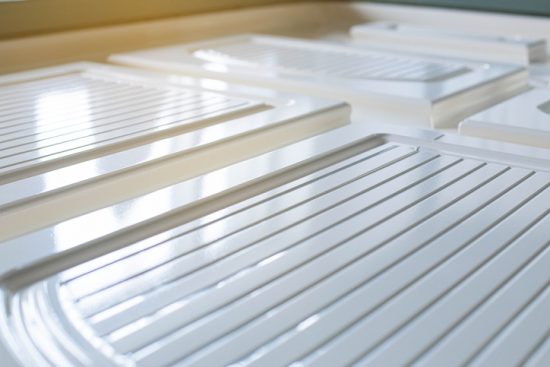
Finishing Up the Lamination Job
As a graduate of cabinet making school, knowing how to properly complete the lamination process is pivotal in ensuring a neatly finished product. Once your veneer is attached to the cabinet surface, use the pressure roller to obtain a durable attachment between the two surfaces. Next, route the edges, maintaining a consistent distance between the router and the edge to keep a consistent appearance. During this step, use goggles to protect your eyes. Once you’ve routed the edges, the lamination process is complete! After letting the lamination sit, you can attach the protected cabinet fixtures to their designated location.
Are you ready to enrol in cabinet making courses?
Become an expert at this craft with a program at the North American Trade Schools.
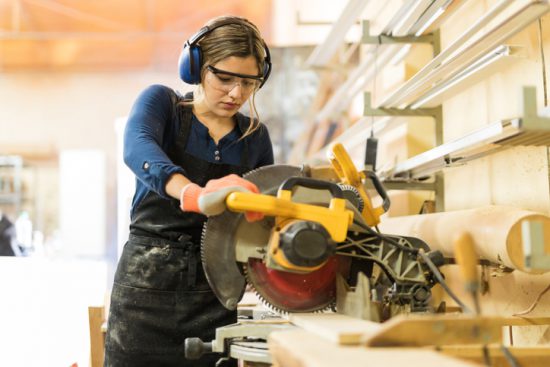
If you love expressing yourself artistically through woodworking, a career in cabinetry could be right for you. Cabinet making is a craft that’s been around for centuries, and building the skills necessary to master this art is no simple task. Cabinet makers specialize in the hands-on process of working with wood to create unique and durable pieces of furniture, including: shelving, cabinets, tables, and more. These professionals are experts in selecting the right materials, tools and finishes to turn a design into a usable product. In order to do so successfully, they typically have a few important qualities. If you’re interested in cabinet making training, keep reading to discover more on these qualities!
1. Professionals with Cabinet Making Training Are Attentive to Detail
Cabinetry is all about precision, from the angle at which the wood is cut to applying the finishing touches to a unique design. Professionals with cabinet making training know how to keep track of each detail of their project–ensuring that upon completion, each different element will seamlessly fit together to create a durable, usable structure. Great cabinetry is all about high quality, and the quality of your products will be enhanced when you’re able to pay attention to even the smallest of details.
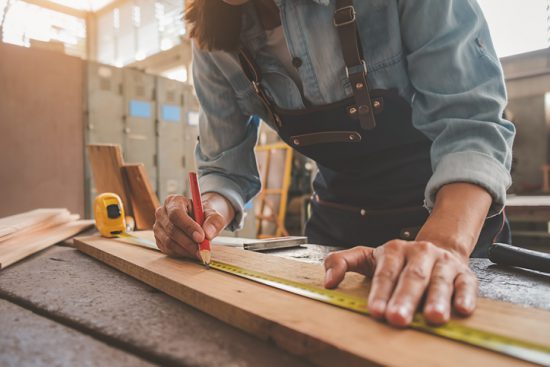
2. Good Time Management Skills
Have you always been good at managing your time well? This is a great skill to have if you’re interested in a career in cabinet making. Cabinet makers often work on many different projects at a time, some involving time constraints around their completion. In order to succeed in the cabinetry business, it’s important to be able to organize your time in a realistic and productive manner–ensuring that you’re setting aside enough time to complete each project.
3. Solid Knowledge of Cabinetry Tools
Behind every successful cabinet maker is a strong working knowledge of the tools and equipment used to create quality products. During cabinet making school, you’ll gain experience using carpentry tools such as table saws, drill presses, planers, joiners, band saws, shapers, and more. You’ll also become comfortable with different power tools that will improve your efficiency.
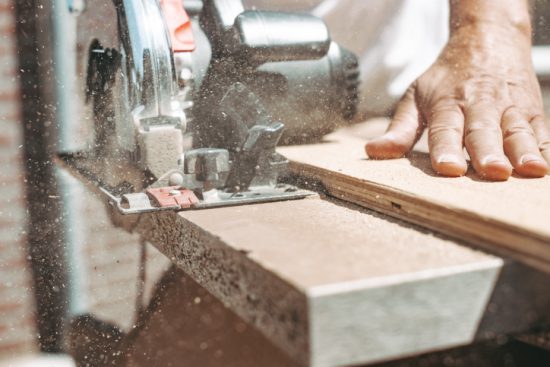
4. Successful Cabinet Makers Are Adaptable
Throughout your career in cabinet making, you’re likely to work with a number of different clients–each with their own ideas and vision for the style and function of the furniture they’d like to commission. In order to ensure the satisfaction of your clients, it’s important to remain adaptable and open to feedback and new ideas. If you’re able to successfully accommodate your clients’ requests, you’ll be more likely to succeed in building a loyal customer base.
5. A Strong Work Ethic
It’s no secret that success in the cabinetry industry takes a strong work ethic. Cabinet makers work hard to turn a project from a drawing to a functional piece of furniture. When it comes to this artisan craft, there are rarely opportunities to cut corners–as clients are expecting a high-quality product. If you’re a dedicated worker who’s passionate about what they do, then you’ll be likely to succeed as a cabinet maker.
Thinking of enrolling in cabinet making courses?
Launch an exciting future with a program at the North American Trade Schools!
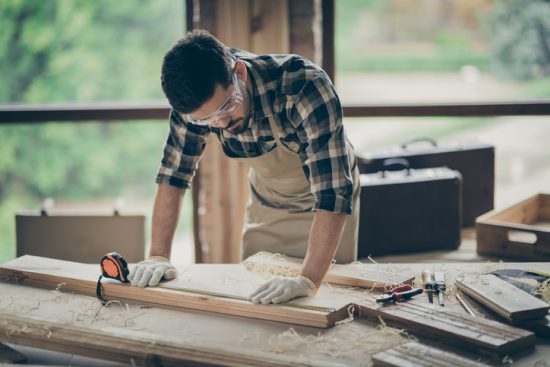
If you’re passionate about working with your hands and turning your love of the woodworking craft into a career, you might want to consider becoming a cabinet maker. Through a cabinet making program, you’ll learn how to select the right type of wood, design and plan the layout of cabinets, read blueprints, utilize woodworking machines, and perform different procedures and techniques relevant to cabinetry.
Once you launch your career, you’ll use the skills you’ve built in order to create custom cabinetry for the clients you work with. While the possibilities for creating custom cabinetry are endless, there are a few basic building principles which will be helpful to follow. Below, discover an introductory guide to the art of custom cabinetry.
After Cabinet Making School, Start by Making a Plan for Your Cabinets
The first step of custom cabinetry is the planning and design process. In this stage, you’ll want to pick the wood you want to use for the cabinets–a decision which may be based on a client’s request. Next, you’ll want to conduct a thorough inspection of the area where you’ll be installing the cabinets, measuring the space where the cabinets will go in order to obtain the right dimensions for your design. With your dimensions in hand, you can move on to designing the type of cabinets you want to create–using blueprints to plan out your designs. As a professional with cabinet making training, planning out the dimensions, materials and specifications of your cabinets before beginning the building process will help you to avoid mistakes and work more efficiently.
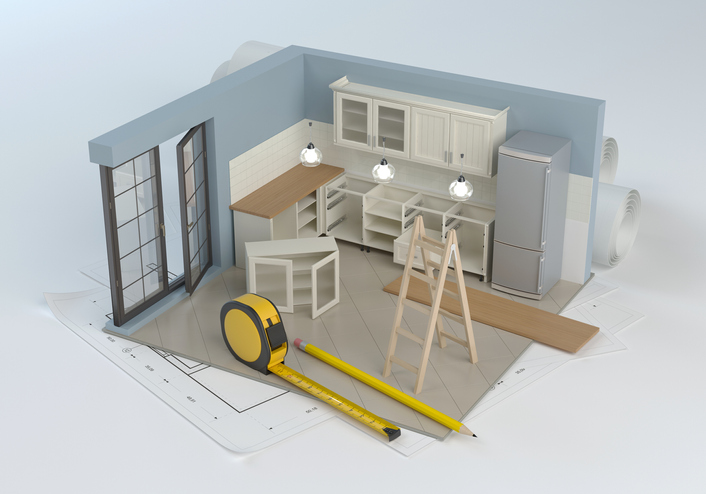
Building Cabinet Frames
After planning your custom cabinet design, you can move on to building the cabinet frames–including the side and front frame. With your side frames cut to the right dimensions, you can use a table saw to cut a “dado” A dado is a groove which enables one piece of wood to connect to another and into the sides of the cabinet. Then, you can put the sides together using both a finish nailer and wood glue to secure them to each other. Here, it’s helpful to use a framing square–a device that lets you know whether the cabinet sides have been placed together squarely. Next, you can build the front–or face frame–of the cabinet. Typically, you’ll want to save your selected wood material for this piece, using plywood for the hidden sides of the cabinet. Once the face frame has been cut, you can drill holes in it, attaching it to the rest of the frame with pocket screws and wood glue.
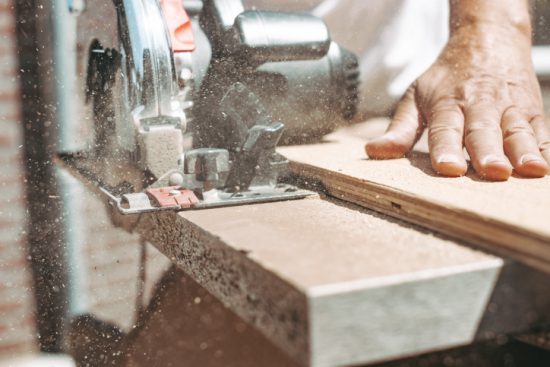
Putting on the Finishing Touches
While attending cabinet making school, it’s important to note that no custom cabinet making process is complete without putting in some finishing touches before installing the cabinets. First, you’ll want to refine the appearance of the cabinets you’ve built by performing some light sanding on the surface of the cabinets. Next, you’ll want to stain or paint the surface area of the cabinets in order to obtain the right appearance. Lastly, when it comes to installation, you can use carefully selected hinges to attach cabinet doors, and use drawer tracks and rails in order to install cabinet drawers. Once everything is working properly, your custom cabinet installation is complete!
Are you ready to begin cabinet making courses?
Get started with a program at the North American Trade Schools!




